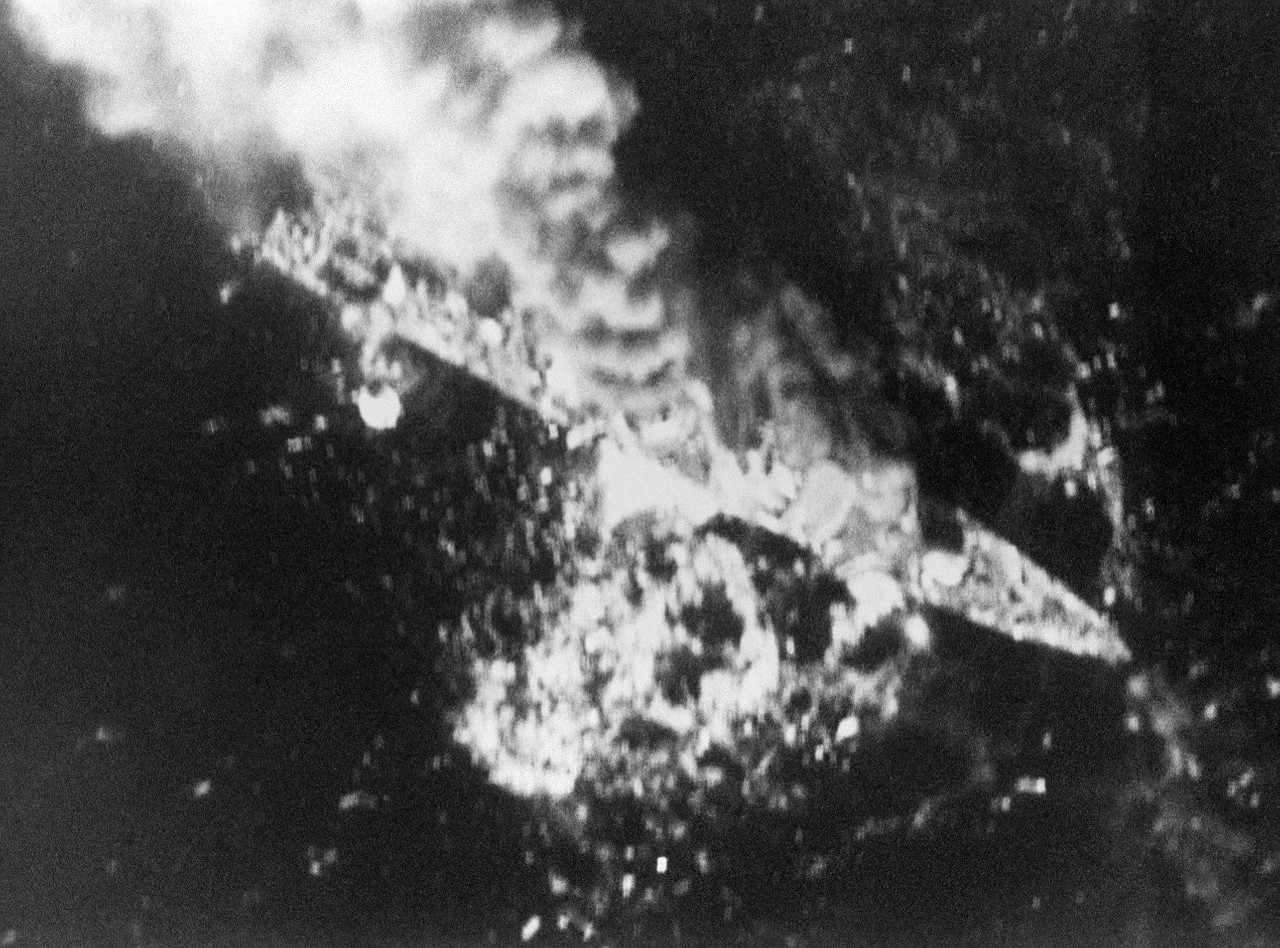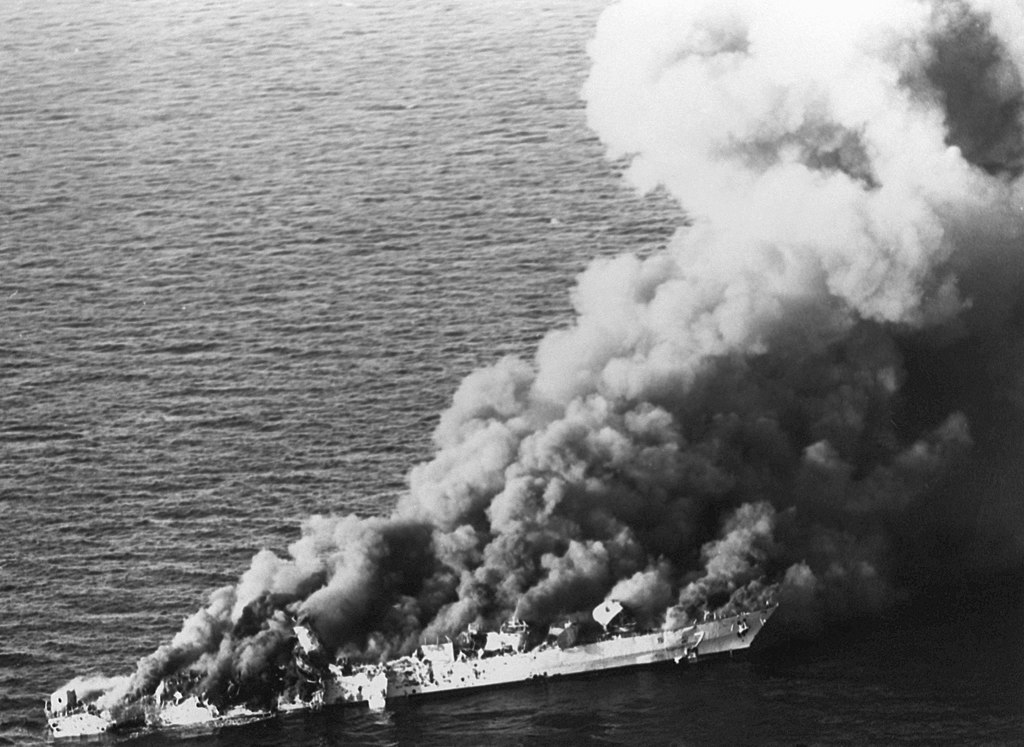Israel launched retaliatory strikes against Iran, targeting the vicinity of Isfahan in central Iran. The retaliation follows Iran’s recent massive drone and missile assault on Israeli territory, marking a dangerous escalation that threatens to engulf the entire region.
Reports indicate that the strike, which occurred overnight, targeted the area around Isfahan in central Iran, a site believed to have been involved in the April 13 attack on Israel.
The exchange of fire between the two nations has reignited fears of a broader conflict, with concerns mounting over the potential involvement of the United States.
The situation draws parallel to historical confrontations, particularly Operation Earnest Will in the late 1980s (July 24, 1987– September 26, 1988), when the United States intervened in the Gulf region amid rising tension.
During this operation, US warships were deployed to escort reflagged Kuwaiti tankers targeted by Iran, leading to clashes between US and Iranian forces.
During Operation Earnest Will, another US military move took place. It was Operation Praying Mantis, a fierce daylong battle between the US Navy and the Iranian Navy. The operation was launched four days after an Iranian mine hit the USS Samuel B. Roberts on April 14, 1988.

The blast caused the ship to be lifted out of the water, creating a 30-foot hole below the waterline and destroying a 15-foot section of the keel. Ten sailors sustained severe injuries, including four who were severely burned, alongside Commander Paul X. Rinn.
Despite the ship’s critical condition, the exceptional damage control efforts of the well-trained crew prevented its sinking, as described in Bradley Peniston’s book, “No Higher Honor: Saving the USS Samuel B. Roberts in the Persian Gulf.”
The crew resorted to welding steel plates and rigging cables to prevent the ship’s stern from breaking off, showcasing a heroic feat of damage control.
In response to the incident, the US reacted vigorously. Under the direction of President Reagan, the US Navy engaged the Iranian Navy in a daylong operation named Praying Mantis, employing combined surface-ship and air attacks.
Operation Praying Mantis
According to the Naval History and Heritage Command, “Operation Praying Mantis was the largest of five major US Navy surface actions since World War II. It was the first, and so far the only time the US Navy has exchanged surface-to-surface missile fire with an enemy, and it resulted in the largest warship sunk by the U.S. Navy since WWII.”
The mission’s objective was clear: to neutralize Iranian oil platforms serving as bases for attacks on Gulf shipping and to eliminate threats posed by Iranian naval vessels, particularly the notorious frigates targeting merchant-ship crews with machine-gun fire.
The US military deployed a squadron of EA-6B Prowler electronic attack aircraft to suppress Iranian fire-control radars and communications, enabling American aircrew to engage their targets safely.
The opening salvo of the battle saw naval gunfire and explosive charges damaging the Iranian oil platforms. In response, two Iranian F-4 Phantom aircraft, a guided-missile patrol boat, and armed Boghammer speedboats were sent into the battle.

Undeterred, US forces relentlessly engaged the Iranian threats. Surface-to-air missiles chased off the Phantoms, while the USS Wainwright and USS Simpson sank the patrol boat with a barrage of missiles and naval gunfire.
A-6E Intruder aircraft launched attacks on the Boghammers, sinking one and damaging others, forcing the remaining boats to retreat. As the battle intensified, an A-6 Intruder piloted by Cmdr. Bud Langston came under fire from the Iranian frigate Sahand.
In a display of courage and precision, Langston and his crew returned fire, striking Sahand with missiles and a laser-guided bomb. Another Intruder and A-7 Corsairs joined the fray, unleashing a relentless barrage of missiles and bombs that set Sahand ablaze.
Hours later, the severely damaged Sahand succumbed to the relentless assault. In a bold but ill-fated move, the sister ship Sabalan ventured into the fray, only to face a similar fate.

A laser-guided bomb, delivered by Lt. Cmdr. Jim Engler’s Intruder, struck Sabalan’s engine room and delivered a decisive blow.
Despite the operation’s success, President Reagan opted to call off further attacks, recognizing the toll taken on both sides. The US had made its point clear: aggression against its interests would not be tolerated.
In the aftermath of Operation Praying Mantis, Iran towed the damaged Sabalan back to port, marking the end of a swift and decisive response to Iranian provocations. The operation showcased the formidable capabilities of the US military and served as a warning to adversaries seeking to challenge American interests in the region.
William J. Luti, a retired U.S. Navy captain and an adjunct fellow at the Hudson Institute, noted, “Praying Mantis remains a case study in strengthening deterrence. Our victory kept Iran’s Navy at bay for more than two decades and helped change the course of the Iran-Iraq War, which had upended the region for eight bloody years. Iran never laid mines in the Gulf again.”
Iranian Intelligence’s Misjudgment
Years later, a declassified CIA report shed light on a crucial aspect of Operation Praying Mantis, revealing a significant misunderstanding on the part of Iranian intelligence.
According to the report, Iran believed that the operation was part of a coordinated effort between the United States and Iraq, with the US Navy launching attacks from the south and Iraq initiating a major offensive from the north.
The timing of the operation coincided with a key event on Iran’s northern border, as Iraq launched a major offensive across Iran’s disputed northwest border on the morning of April 18, 1988.
Iranian intelligence erroneously conveyed to the Ayatollah that a pact had been formed between Saddam Hussein’s Iraq and the United States to confront Iran simultaneously from both northern and southern fronts.
The tragic incident involving the shoot-down of an Iranian airliner by the USS Vincennes further fueled the Ayatollah’s belief that the United States was poised to continue its military actions from the southern front.
Faced with the daunting prospect of confronting two major adversaries on multiple fronts, Iran opted to seek peace with Iraq just a month later.
Operation Praying Mantis, in this context, served a dual purpose. On the one hand, it restored a sense of national pride for the United States, showcasing its military prowess and resolve.
On the other hand, it inadvertently played a role in bringing an end to the prolonged and devastating Iran-Iraq War, which had exacted a heavy toll in terms of lives lost and infrastructure destroyed, both among soldiers and civilians alike.
- Contact the author at ashishmichel(at)gmail.com
- Follow EurAsian Times on Google News




